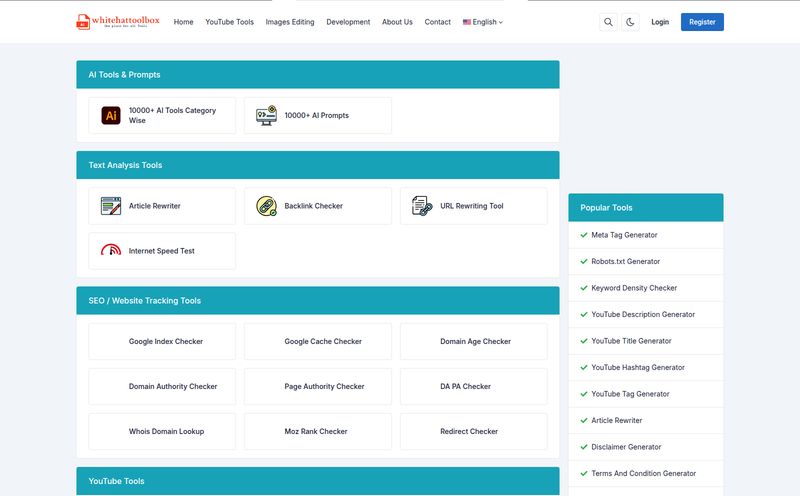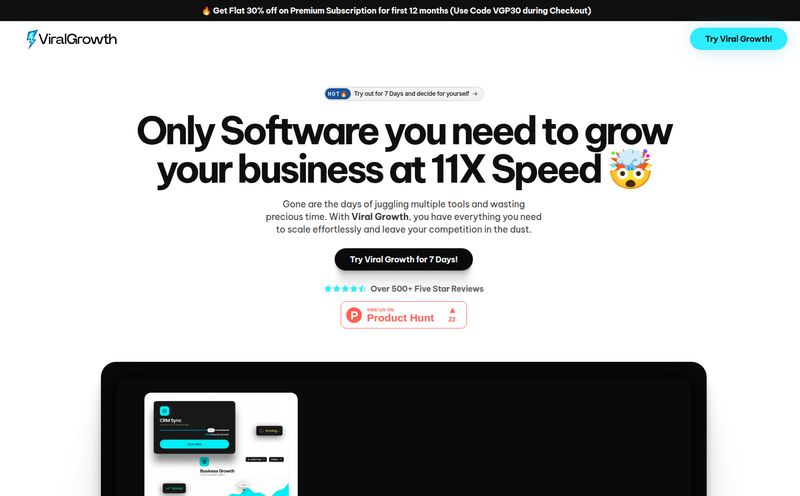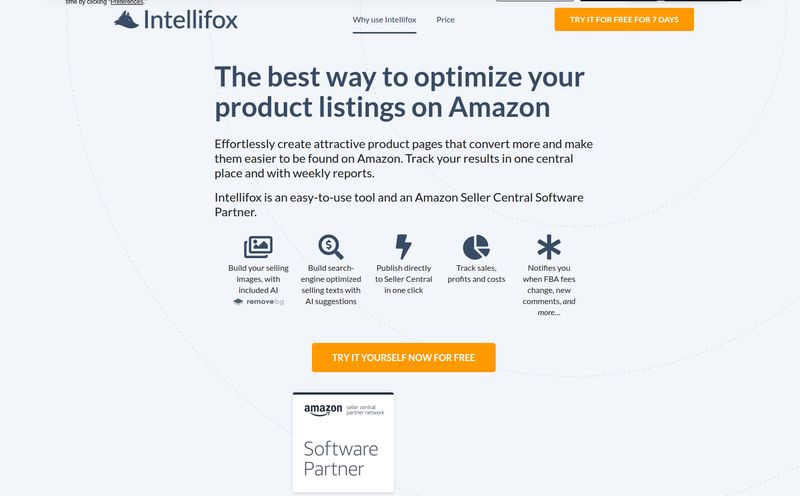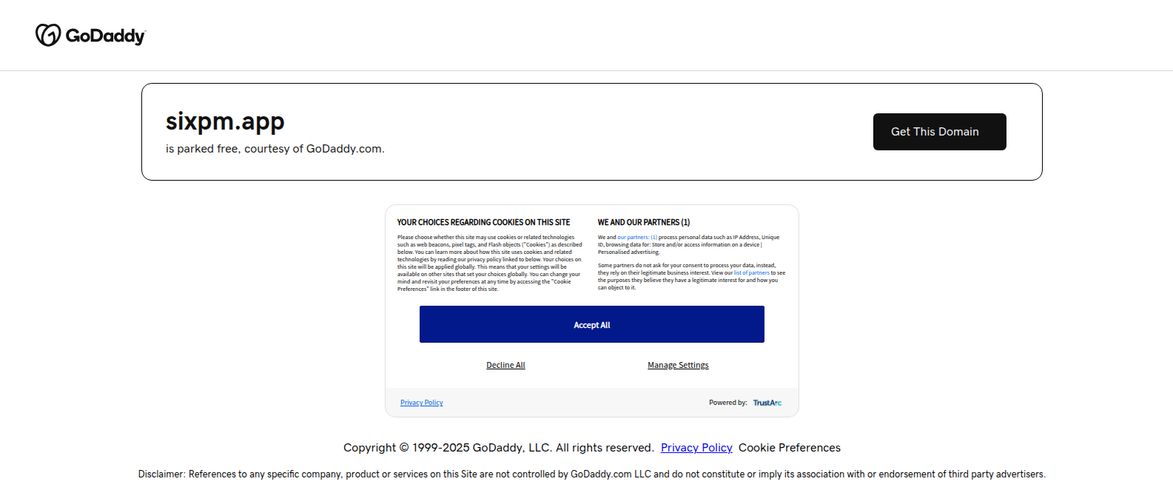If you’ve been in the SEO game for more than a week, you know the grind. You publish a fantastic new piece of content, you’re proud of it, and then comes the other work. The part where you have to go back through your dozens, maybe hundreds, of old articles to find relevant places to link back to your shiny new post. It’s tedious. It’s time-consuming. And frankly, it’s a part of the job I could happily do without.
Internal linking is one of those things we all know is critical. It’s like flossing. You know you should do it every day, but sometimes... you just don't. It’s the invisible web that holds your site’s authority together, guiding both users and search engine crawlers from one relevant page to the next. For years, I’ve been preaching its importance, all while secretly wishing for a little robot helper to just do it for me.
Well, it looks like someone was listening. I stumbled upon a tool called Linkbot, which claims to be a “100% Automated Internal Linking Tool.” A bold claim. One that immediately made my inner skeptic raise an eyebrow, while the overworked blogger in me jumped for joy. So, I decided to take a closer look and see if it’s the real deal or just more marketing fluff.
The Unsung Hero of Modern SEO
Before we get into the nuts and bolts of Linkbot, let’s just quickly touch on why we should even care. The folks at Linkbot say, “Internal linking is the most powerful asset in your SEO toolbox,” and I’ve gotta say, I’m inclined to agree. It’s not as glamorous as scoring a backlink from Forbes, but it’s something you have total control over.
Think of it this way: a good internal linking structure is like being an expert tour guide for Google. You’re telling it, “Hey, see this new article about CPC strategies? It’s directly related to this older, authoritative pillar post on digital advertising. They belong together.” This flow of authority, or “link juice” as we used to call it, helps Google understand your site’s hierarchy and topical relevance. It also keeps users on your site longer, reducing bounce rates and sending all those lovely engagement signals that search engines love to see. Neglect it, and you've got a bunch of orphaned pages just floating in cyberspace, no matter how great they are. A real shame.
So, What on Earth is Linkbot?
At its core, Linkbot is an SEO assistant designed to do one thing and do it extremely well: automate your internal linking process. Instead of you manually digging through your site, Linkbot’s bot scans your content—all of it—and automatically creates contextual internal links between your pages. It’s designed to find the most relevant anchor text and point it to the most appropriate destination page, building that valuable web of connections without you lifting a finger.
It works with pretty much any platform you can think of, whether you’re on WordPress, Ghost, Webflow, or even a custom-coded HTML site. This platform-agnostic approach is a huge plus, as many tools are frustratingly limited to the WordPress ecosystem.
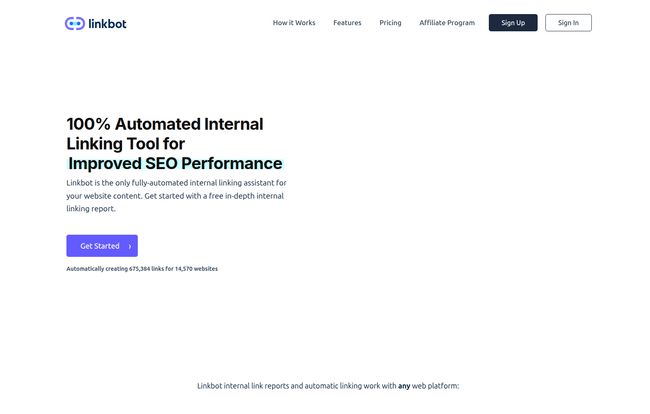
Visit Linkbot
A Look at Linkbot's Core Features
Linkbot isn’t a one-trick pony. It bundles a few services together to create a pretty comprehensive internal linking strategy. Let's break it down.
The Free Internal Linking Report
This is your entry point. Before you even think about paying, you can get a free internal linking report and grade for your site. This is smart. It gives you a snapshot of your site's current health, showing you where the gaps are. I’ve seen a few of these reports, and they’re great for spotting orphaned content and understanding your site’s current link distribution. It’s a no-risk way to see what you’re working with.
Fully Automated Content Linking
This is the main event. Once you activate the bot, it gets to work. It reads your content and starts inserting links. The idea is to mimic what a human SEO would do, just... a lot faster. The tool analyzes your content, identifies opportunities, and creates the links for you. It even has an “Ongoing New Content Synch” feature, which means when you publish a new article, it automatically finds and links from relevant older posts. That right there is a massive time-saver.
Dynamic Content Links and Other Goodies
Beyond the basic automation, Linkbot also offers what it calls “Dynamic Content Links.” This is a feature that can display a list of related articles within your content, kind of like a supercharged “Related Posts” widget. It’s another great way to improve user navigation and time-on-page. They also support multi-domain linking if you’re running a network of sites, and allow for custom imports, giving you a bit more granular control if you need it. Pretty thorough.
Let's Talk Money: Linkbot Pricing Plans
Alright, the all-important question: what’s it going to cost? Linkbot’s pricing is transparent and based on the size of your website. I appreciate that they offer a 14-day free trial for their bot service, so you can see the results before committing. Remember, the initial report and grade are always free.
| Plan | Price | Key Features |
|---|---|---|
| Starter | $49 / month | Up to 1,000 URLs, 5 Websites, 1 User |
| Professional | $99 / month | Up to 5,000 URLs, 15 Websites, 5 Users |
| Business | $299 / month | Up to 50,000 URLs, 50 Websites, Unlimited Users |
All plans include the core features like automated linking, dynamic links, and multi-domain support, along with the 14-day free trial.
My Honest Take: The Good and The Not-So-Good
No tool is perfect, right? After digging around, here’s my balanced perspective. The biggest advantage is obvious: it saves an incredible amount of time. For solo bloggers, small agencies, or anyone managing a large content site, the hours recouped from manual link building could be huge. The fact that it works with any web platform is a massive win in my book. So many tools are just for WordPress, which leaves a lot of us out.
On the flip side, the setup requires adding a code snippet to your website. For anyone who has installed Google Analytics or a Facebook Pixel, this is child's play. But I know it can sound intimidating for less technical users. Don’t let it be. It’s usually a simple copy-paste job into your site’s header.
I also have to mention their “Guaranteed Performance Results.” They promise gains in sixty days or your money back. That sounds amazing, but the fine print likely has conditions. I’d view this less as a magic bullet and more as a confidence statement from the company. SEO results are never truly guaranteed, as Google's own starter guide makes clear. Your content quality still matters most.
Frequently Asked Questions About Linkbot
I had a few questions myself, so here are some answers to what you're probably wondering.
Is Linkbot difficult to set up?
Not really. It involves adding a small piece of Javascript code to your site. If you've ever set up analytics or ad code, it's a very similar process. They provide instructions, and it shouldn’t take more than a few minutes.
Will Linkbot's automated links look natural to Google?
From what I've seen, the tool is designed to create contextual links that look and feel natural. It finds relevant anchor text within your paragraphs. The goal is to make links that are genuinely helpful to the reader, which is exactly what Google wants to see. However, I’d still recommend keeping an eye on the dashboard to ensure the links make sense.
Can I use Linkbot with my Shopify or Squarespace site?
Yes. Because it uses a platform-agnostic Javascript snippet, it should work with any website builder or CMS that allows you to add custom code to the site header or footer. This includes WordPress, Shopify, Webflow, Squarespace, Ghost, and many more.
What happens to the links if I cancel my subscription?
This is a big one. Since the links are generated by Linkbot’s script, they will disappear if you cancel your service and remove the code. You're not permanently editing your posts' HTML. This is both a pro and a con—it's clean and leaves no mess, but you are reliant on the subscription to maintain the links.
Is the free report really free?
Yes, it seems to be. You can get your site graded and see a report on your internal linking structure without any cost or obligation. It's their way of showing you the potential value before asking for a credit card.
So, Is Linkbot Worth the Investment?
Here’s my final thought. If you're managing a small personal blog with 20-30 posts, you can probably handle internal linking yourself with a bit of discipline. But if you’re a business, an agency, or a content creator with a substantial and growing library of content, a tool like Linkbot is a no-brainer.
It’s not just about saving time; it's about doing a critical SEO task better and more consistently than a human probably could. We forget things. We get lazy. A bot doesn’t. It turns a manual, often-neglected chore into an automated, strategic asset. For the price of a few cups of coffee a day, you can systematize a process that directly contributes to better rankings and more traffic. For me, that’s a pretty compelling proposition. It might just be the little robot helper I’ve been waiting for.
Reference and Sources
- Linkbot Official Website: https://www.linkbot.com/
- Linkbot Pricing Information: https://www.linkbot.com/#pricing-3
- Google Search Central SEO Starter Guide: https://developers.google.com/search/docs/fundamentals/seo-starter-guide
